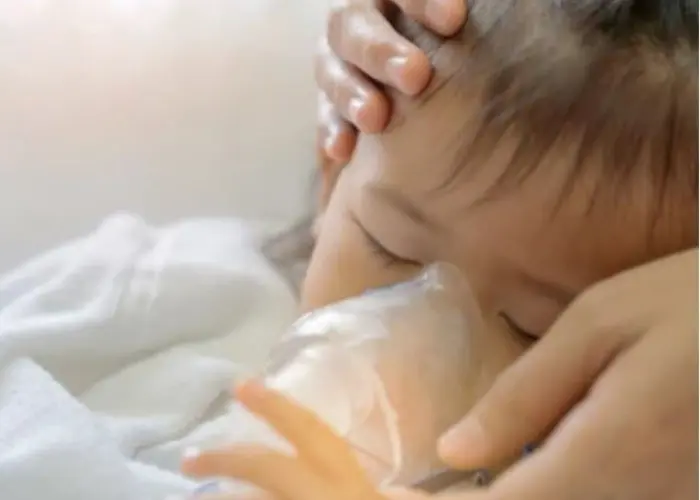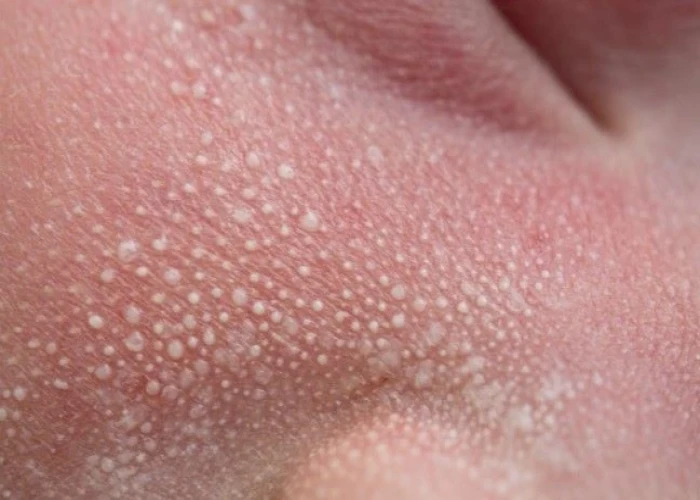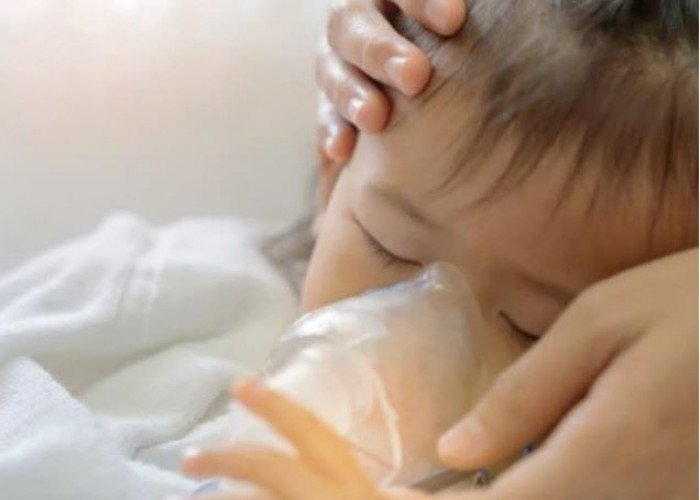 Welcome
Welcome
“May all be happy, may all be healed, may all be at peace and may no one ever suffer."
Childhood asthma

Childhood asthma is a chronic respiratory condition characterized by inflammation and narrowing of the airways that leads to wheezing, coughing, and difficulty breathing. It is a common condition in children and can be triggered by a variety of factors, including environmental allergens, viral infections, exercise, and stress. Asthma is typically diagnosed through a combination of medical history, physical exam, and lung function tests, and treatment may include medications such as inhaled corticosteroids, bronchodilators, and leukotriene modifiers, as well as avoiding triggers and maintaining good asthma control through regular monitoring and follow-up care.
Research Papers
Disease Signs and Symptoms
- Shortness of breath (dyspnea)
- Has widened nostrils when breathing in
- Is using abdominal muscles to breathe
- Has to stop in midsentence to catch his or her breath
- Repeated episodes of suspected bronchitis or pneumonia
- Wheezing or whistling sounds when a child breathes out
- Trouble breathing that hampers play or exercise
- Delayed recovery or bronchitis after a respiratory infection
- Asthma
- Trouble sleep (insomnia)
- Chest congestion or tightness
- Is trying so hard to breathe that the abdomen is sucked under the ribs when he or she breathes in
Disease Causes
Childhood asthma
Childhood asthma causes aren't fully understood. Some factors thought to be involved include:
- Inherited tendency to develop allergies
- Parents with asthma
- Some types of airway infections at a very young age
- Exposure to environmental factors, such as cigarette smoke or other air pollution
Increased immune system sensitivity causes the lungs and airways to swell and produce mucus when exposed to certain triggers. Reaction to a trigger can be delayed, making it more difficult to identify the trigger. Triggers vary from child to child and can include:
- Viral infections such as the common cold
- Exposure to air pollutants, such as tobacco smoke
- Allergies to dust mites, pet dander, pollen or mold
- Physical activity
- Weather changes or cold air
Sometimes, asthma symptoms occur with no apparent triggers.
Disease Prevents
Childhood asthma
Careful planning and avoiding asthma triggers are the best ways to prevent asthma attacks.
- Limit exposure to asthma triggers. Help your child avoid the allergens and irritants that trigger asthma symptoms.
- Don't allow smoking around your child. Exposure to tobacco smoke during infancy is a strong risk factor for childhood asthma, as well as a common trigger of asthma attacks.
- Encourage your child to be active. As long as your child's asthma is well-controlled, regular physical activity can help the lungs to work more efficiently.
- See the doctor when necessary. Check in regularly. Don't ignore signs that your child's asthma might not be under control, such as needing to use a quick-relief inhaler too often.
- Asthma changes over time. Consulting your child's doctor can help you make needed treatment adjustments to keep symptoms under control.
- Help your child maintain a healthy weight. Being overweight can worsen asthma symptoms, and it puts your child at risk of other health problems.
- Keep heartburn under control. Acid reflux or severe heartburn (gastroesophageal reflux disease, or GERD) might worsen your child's asthma symptoms. He or she might need over-the-counter or prescription medications to control acid reflux.
Disease Treatments
Initial treatment depends on the severity of your child's asthma. The goal of asthma treatment is to keep symptoms under control, meaning that your child has:
- Minimal or no symptoms
- Few or no asthma flare-ups
- No limitations on physical activities or exercise
- Minimal use of quick-relief (rescue) inhalers, such as albuterol (ProAir HFA, Ventolin HFA, others)
- Few or no side effects from medications
Treating asthma involves both preventing symptoms and treating an asthma attack in progress. The right medication for your child depends on a number of things, including age, symptoms, asthma triggers and what seems to work best to keep his or her asthma under control.
For children younger than age 3 who have mild symptoms of asthma, the doctor might use a wait-and-see approach. This is because the long-term effects of asthma medication on infants and young children aren't clear.
However, if an infant or toddler has frequent or severe wheezing episodes, a medication might be prescribed to see if it improves symptoms.
Long-term control medications
Preventive, long-term control medications reduce the inflammation in your child's airways that leads to symptoms. In most cases, these medications need to be taken daily.
Types of long-term control medications include:
- Inhaled corticosteroids. These medications include fluticasone (Flovent Diskus, Flovent HFA), budesonide (Pulmicort Flexhaler), mometasone (Asmanex HFA), ciclesonide (Alvesco), beclomethasone (Qvar Redihaler) and others. Your child might need to use these medications for several days to weeks before getting the full benefit.
- Long-term use of these medications has been associated with slightly slowed growth in children, but the effect is minor. In most cases, the benefits of good asthma control outweigh the risks of possible side effects.
- Leukotriene modifiers. These oral medications include montelukast (Singulair), zafirlukast (Accolate) and zileuton (Zyflo). They help prevent asthma symptoms for up to 24 hours.
- Combination inhalers. These medications contain an inhaled corticosteroid plus a long-acting beta agonist (LABA). They include fluticasone and salmeterol (Advair Diskus, Advair HFA), budesonide and formoterol (Symbicort), fluticasone and vilanterol (Breo Ellipta), and mometasone and formoterol (Dulera).
- In some situations, long-acting beta agonists have been linked to severe asthma attacks. For this reason, LABA medications should always be given to a child with an inhaler that also contains a corticosteroid. These combination inhalers should be used only for asthma that's not well-controlled by other medications.
- Theophylline. This is a daily pill that helps keep the airways open. Theophylline (Theo-24) relaxes the muscles around the airways to make breathing easier. It's mostly used with inhaled steroids. If you take this drug, you'll need to have your blood checked regularly.
- Immunomodulatory agents. Mepolizumab (Nucala), dupilumab (Dupixent) and benralizumab (Fasenra) might be appropriate for children over the age of 12 who have severe eosinophilic asthma. Omalizumab (Xolair) can be considered for children age 6 or older who have moderate to severe allergic asthma.
Quick-relief medications
Quick-relief medications quickly open swollen airways. Also called rescue medications, quick-relief medications are used as needed for rapid, short-term symptom relief during an asthma attack — or before exercise if your child's doctor recommends it.
Types of quick-relief medications include:
- Short-acting beta agonists. These inhaled bronchodilator medications can rapidly ease symptoms during an asthma attack. They include albuterol (ProAir HFA, Ventolin HFA, others) and levalbuterol (Xopenex HFA). These medications act within minutes, and effects last several hours.
- Oral and intravenous corticosteroids. These medications relieve airway inflammation caused by severe asthma. Examples include prednisone and methylprednisolone. They can cause serious side effects when used long term, so they're only used to treat severe asthma symptoms on a short-term basis.
Disease Diagnoses
Disease Allopathic Generics
Disease Ayurvedic Generics
Disease Homeopathic Generics
Disease yoga
Childhood asthma and Learn More about Diseases

Dermatitis

Patellar tendinitis

Yeast infection (vaginal)

Childhood schizophrenia

Botulism

Milia

Dislocated elbow

Chronic pelvic pain in women
Childhood asthma, Childhood asthma treatment, শৈশব হাঁপানি
To be happy, beautiful, healthy, wealthy, hale and long-lived stay with DM3S.
